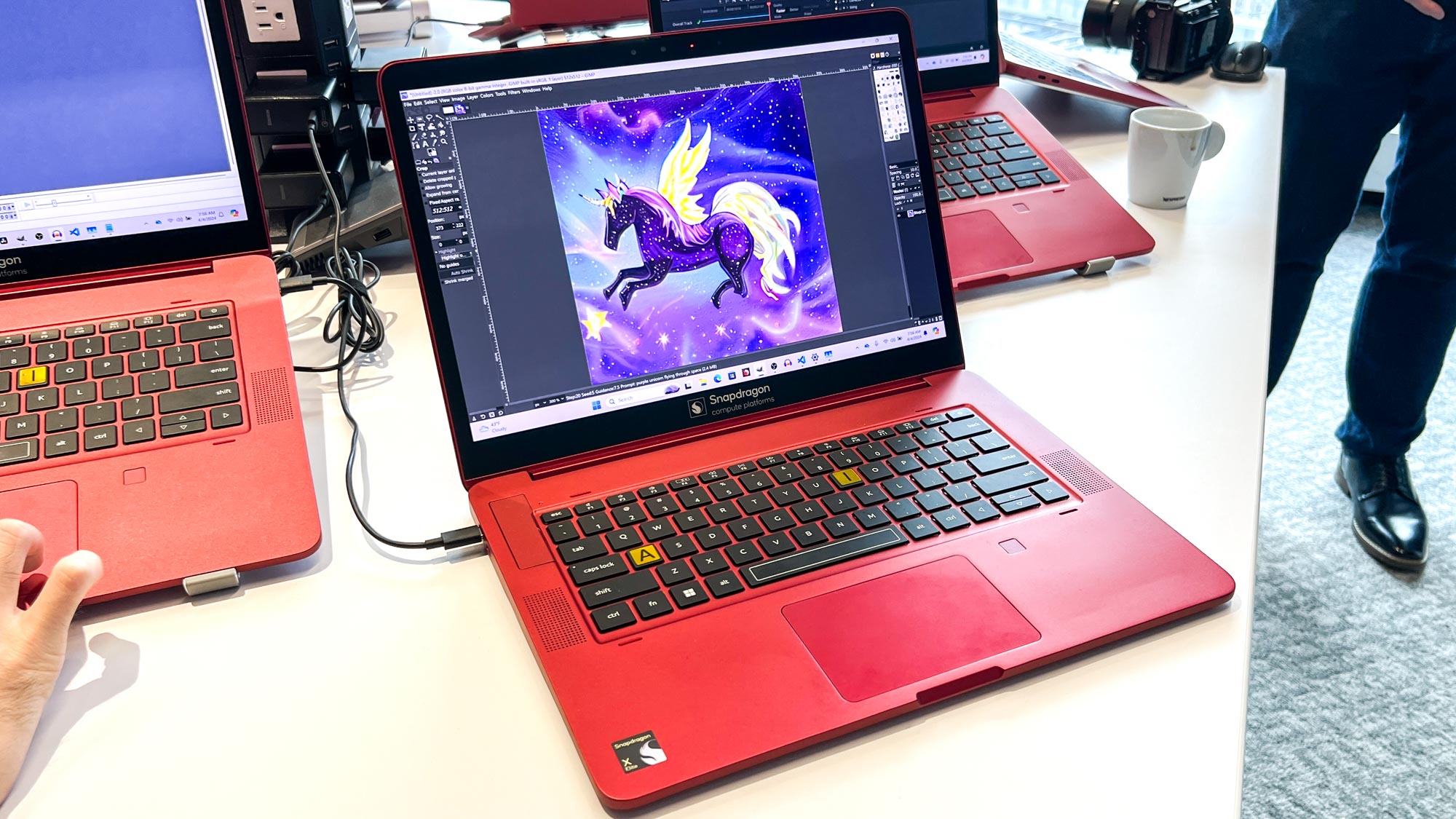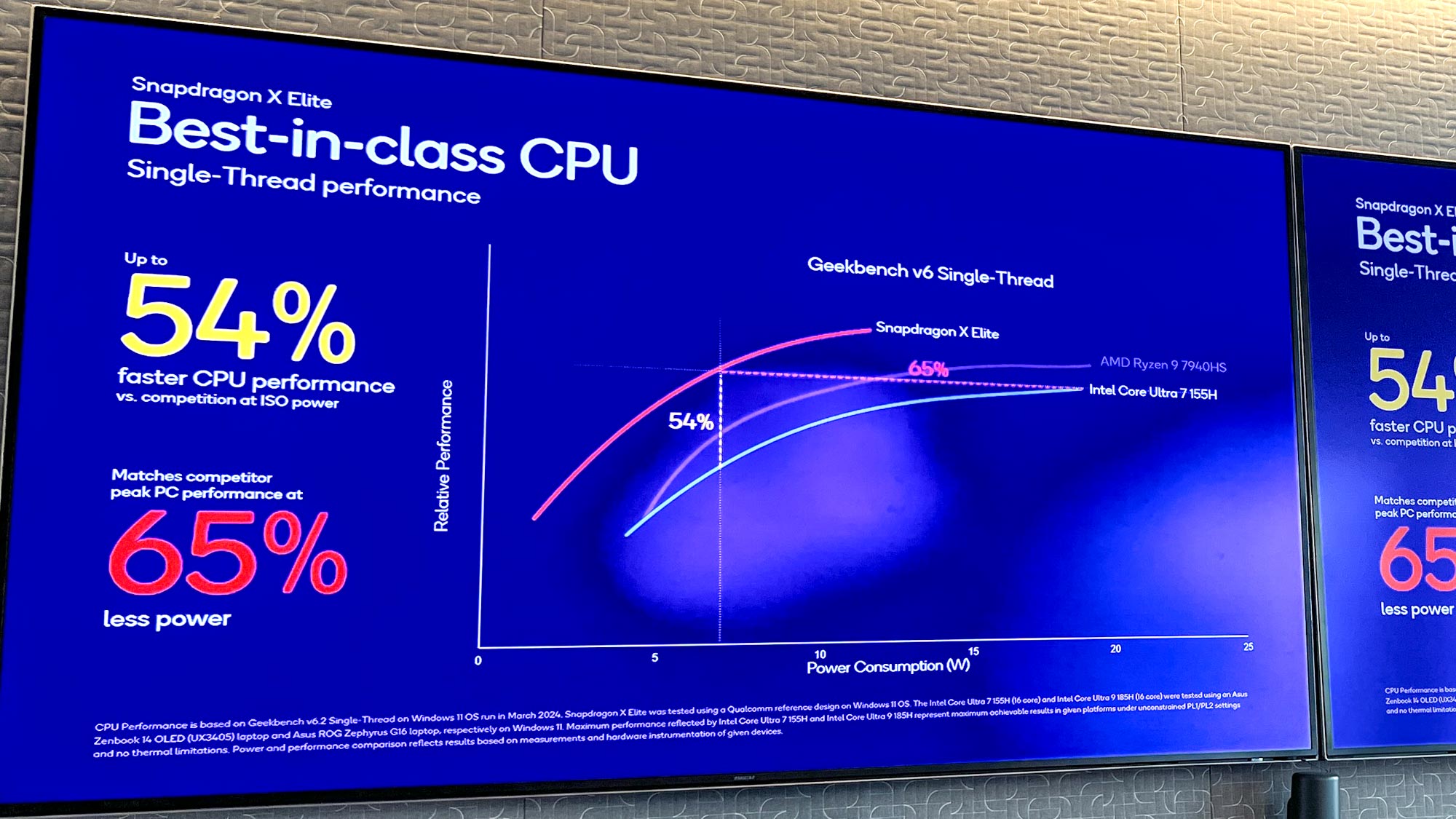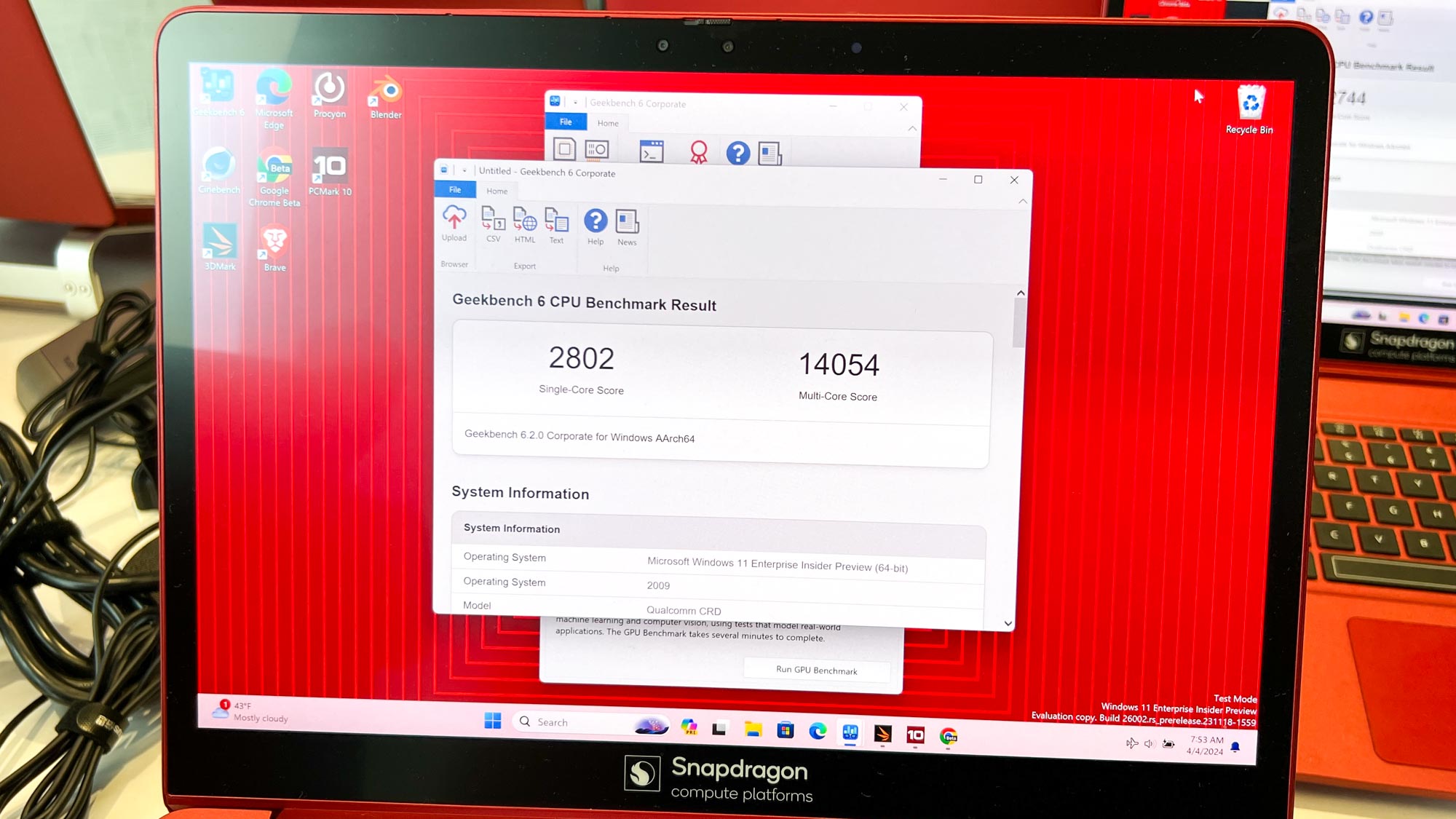Snapdragon X Elite could crush Intel chips in laptops — here's why
This could be a game-changer

I’ve reviewed a lot of the best Windows laptops for Tom’s Guide over the years. Though the best MacBooks might offer better performance and efficiency, Intel-powered Windows 11 laptops usually end up being my favorite notebooks of any given year. Decades of familiarity with Microsoft’s operating system is a big reason, as are the various forms Windows laptops can take. And of course, when it comes to gaming, no MacBook can match the best gaming laptops.
While they don’t offer the same level of interoperability as devices in the Apple ecosystem, I’ll still favor Windows laptops like the Dell XPS 15 OLED, Samsung Galaxy Book 3 Ultra and HP Omen Transcend 14 due to their utility as both work and gaming notebooks. However, as much as I love Windows laptops, the devices I’ve tested tend to have the same glaring flaw — poor battery life.
| Header Cell - Column 0 | Time (hours:mins) |
|---|---|
| Dell XPS 16 (2024) | 11:03 |
| Dell XPS 14 (2024) | 9:21 |
| MacBook Pro 16-inch M3 Max (2023) | 17:11 |
| MacBook Pro 16-inch M3 Pro (2023) | 18:56 |
| LG Gram 17 Pro (2023) | 12:02 |
| Dell XPS 17 (2022) | 8:05 |
| MacBook Pro 14-inch 2023 | 14:02 |
| Lenovo Yoga 9i Gen 8 | 10:10 |
| Lenovo Yoga 9i Gen 7 | 8:08 |
| Acer Swift 5 | 11:25 |
| Acer Spin 5 | 12:31 |
| Samsung Galaxy Book 3 Pro 360 | 8:07 |
| Dell XPS 13 Plus | 7:34 |
| Dell XPS 13 (2022) | 11:13 |
There was a time when 8-hour battery life was considered good (or even great). But ever since Apple’s M-series laptops released, we’ve seen the battery life ceiling get raised.
Eight hours isn’t impressive any more — not when some Apple laptops can last 14 hours or more. Even though I prefer Windows, I usually travel with a MacBook Pro because I don’t have to worry about its battery suddenly dying on me. I can’t say the same for Intel-powered Windows laptops, which I know will run out of juice well before the workday is over. It’s the biggest problem I have with these machines — a problem that seems to have gotten worse over the years.
Is there any hope for improved battery life on Windows laptops? There could be if Qualcomm’s claims about its upcoming Snapdragon X Elite chip are true. While we’ve heard a lot about the processor’s Neural Processing Unit (NPU) and how deftly it can handle on-device AI-driven tasks, I’m more interested in the chip’s promised efficiency versus Intel's Core Ultra chips. Basically, I want to see if it can finally give Windows laptops decent battery life.
What Snapdragon X Elite promises

When I attended the Snapdragon Summit last fall, Qualcomm compared the Snapdragon X Elite chip to 13th Gen Intel Core CPUs. During a recent event I also attended, Qualcomm compared its laptop chip to Intel’s Meteor Lake processors. If what Qualcomm claims is true, its upcoming processor is going to crush Meteor Lake.
In the Geekbench 6 CPU benchmark test, Qualcomm says that Snapdragon X Elite is 54% faster than the Intel Core UItra 7 155H and consumes 65% less power in single-threaded performance. In multi-threaded performance, Qualcomm’s chip is supposedly 52% faster and consumes 60% less power than the Ultra 7 155H. This test was performed on an Asus Zenbook 14 OLED (UX3405) laptop.
Results were similar when Qualcomm pitted the Snapdragon X Elite against the Intel Core Ultra 9 155H. In Geekbench 6’s single-core test, Qualcomm says the X Elite is 51% faster than the Core Ultra 9 155H and consumes 65% less power. In the multi-core test, the X Elite is 41% faster than the Core Ultra 9 155H and consumes 65% less power. In the 3DMark Wild Life Extreme benchmark, the X Elite is 65% faster and consumes 50% less power than Intel’s chip. These benchmarks were performed on an Asus ROG Zephyrus G16.

The claimed performance gains are impressive, but it’s the supposed power consumption that stood out for me. If Qualcomm’s benchmarks are accurate, laptops with an X Elite chip could have longer battery life than those with Intel Core Ultra chips.
Other factors can affect battery life, such as if a laptop has an OLED display or if you’re playing a graphically demanding game. But if Qualcomm’s processor is less power-hungry than an Intel CPU, that could make Windows laptops with an X Elite chip endure longer.
This last part isn’t related to power consumption, but because I know you’re wondering, I wanted to briefly discuss how the Snapdragon X Elite compares to the Apple M3 chip.
According to Qualcomm, the Snapdragon X Elite turned in a Geekbench 6 score of 15,610 vs the Apple M3’s score of 12,154. If true, X Elite outperforms M3 by 22%. Qualcomm didn’t detail the power consumption differences between its chip and Apple’s.
Snapdragon X Elite outlook
Everything Qualcomm showed me sounds impressive. That said, it’s important to remember we won’t know if these claims are true until we’ve tested laptops with the Snapdragon X Elite chip once they arrive sometime this summer.
If the X Elite chip is as powerful and efficient as Qualcomm says, it could be a game-changer for Windows laptops. I can’t say for certain whether we’ll suddenly see Windows notebooks with the endurance of M-series MacBooks. But if Qualcomm’s upcoming laptop chip can make Windows laptops last longer than Intel machines, I’ll certainly rejoice.
More from Tom's Guide
- Snapdragon X Elite laptops launching in mid-2024
- I’m excited for the Snapdragon X Elite
- Snapdragon X Elite laptops could have an advantage over MacBooks
Sign up to get the BEST of Tom's Guide direct to your inbox.
Get instant access to breaking news, the hottest reviews, great deals and helpful tips.

Tony is a computing writer at Tom’s Guide covering laptops, tablets, Windows, and iOS. During his off-hours, Tony enjoys reading comic books, playing video games, reading speculative fiction novels, and spending too much time on X/Twitter. His non-nerdy pursuits involve attending Hard Rock/Heavy Metal concerts and going to NYC bars with friends and colleagues. His work has appeared in publications such as Laptop Mag, PC Mag, and various independent gaming sites.










